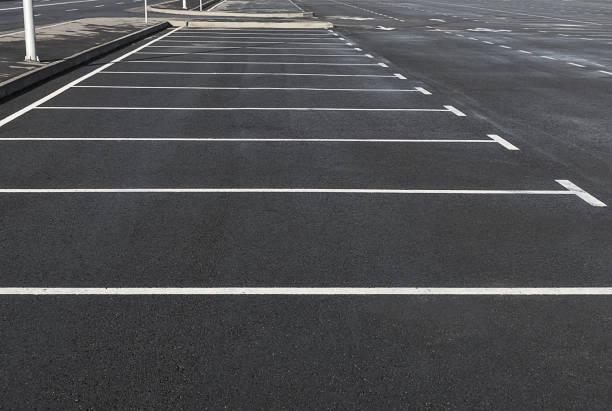Parking Lot Maintenance Checklist for Property Managers

A well-maintained parking lot is more than just a surface for vehicles—it’s a reflection of property care and management standards. Cracks, fading lines, and potholes can create poor impressions and safety risks, while increasing long-term repair costs. Consistent maintenance helps protect the surface, preserve durability, and enhance the property’s professional image. Effective asphalt paving management means more than reactive fixes; it requires preventive planning, inspections, and timely upgrades. Around the 100-day mark of usage, essential steps like sealcoating become crucial to strengthen surface protection, prevent water intrusion, and maintain color richness.
By following a structured maintenance checklist, property managers can reduce expenses, extend pavement lifespan, and ensure a safe, clean environment for tenants and visitors.
Why Asphalt Paving Maintenance Matters
Every parking lot endures stress from heavy vehicles, fluctuating weather, and oil spills. Without proper care, asphalt begins to oxidize, crack, and lose its binding strength. Regular maintenance preserves both the structure and visual appeal of your property.
Key Benefits
-
Prevents early cracking and potholes.
-
Improves safety and reduces liability.
-
Boosts property value and aesthetics.
-
Extends the life of your asphalt paving.
| Q: Why should property managers schedule consistent asphalt maintenance? A: Routine care prevents surface degradation, saves on repairs, and keeps the parking area safe and appealing. |
1. Conduct Routine Inspections
Frequent inspections help identify issues before they become costly.
-
Schedule: Twice per year—spring and fall.
-
Inspect for: Cracks, drainage issues, faded markings, and oil stains.
-
Tip: Document findings to track surface performance over time.
| Q: What’s the best time for inspection? A: During mild seasons when cracks and wear are most visible. |
2. Keep the Surface Clean
A clean surface isn’t just aesthetic—it’s preventive maintenance. Dirt, gravel, and debris can block drainage and cause surface breakdown.
Effective Cleaning Habits
-
Sweep regularly to prevent buildup.
-
Pressure wash to remove oil and fuel stains.
-
Clean drainage areas to prevent pooling.
Clean pavement allows coatings and sealants to adhere properly, maximizing their protective effect.
3. Address Cracks and Potholes Early
Ignoring cracks allows water to seep into the base, causing deeper structural damage.
Steps for Repair
-
Clean and dry the cracks thoroughly.
-
Fill smaller cracks with hot-pour rubberized sealant.
-
Patch larger potholes with professional-grade asphalt mix.
4. Apply Sealcoating for Long-Term Protection
Sealcoating provides a vital protective barrier against UV rays, oil, and water. It rejuvenates the surface and adds a deep, rich finish.
-
When: Every 2–3 years depending on traffic volume.
-
Why: Protects from oxidation, improves appearance, and reduces wear.
| Pro Tip: Apply sealcoat in mild, dry weather to ensure even coverage and longer durability. |
5. Maintain Proper Drainage
Standing water is one of asphalt’s biggest enemies. Poor drainage leads to cracks, rutting, and base damage.
Checklist for Drainage:
-
Clean gutters and catch basins.
-
Ensure slope directs water away from the surface.
-
Repair sunken spots to prevent puddles.
6. Repaint Pavement Markings
Line striping is crucial for both safety and aesthetics. Clear markings direct traffic flow and define parking zones.
-
Use reflective, weather-resistant paint.
-
Re-stripe every 1–2 years or after sealcoating.
-
Ensure ADA-compliant markings are highly visible.
7. Manage Seasonal Maintenance
Each season affects asphalt differently. Adjust your plan throughout the year:
-
Spring: Inspect winter damage and begin repairs.
-
Summer: Ideal time for sealcoating and striping.
-
Fall: Clean debris and check drainage systems.
-
Winter: Avoid chemical deicers that damage asphalt.
8. Partner with Professional Asphalt Experts
While property staff can handle basic upkeep, professional contractors ensure deep protection and high-quality results.
Advantages of Hiring Experts
-
Access to commercial-grade materials and tools.
-
Proper crack routing and heat-sealing for longevity.
-
Compliance with safety and environmental standards.
The Value of Consistent Asphalt Care
Consistent maintenance preserves the structure and beauty of your pavement, enhances safety, and projects a positive image to clients and tenants. A detailed parking lot maintenance checklist keeps property managers proactive—ensuring each part of your asphalt paving, from cracks to coatings, remains in top condition. Regular cleaning, inspections, sealcoating, and drainage care all work together to maximize lifespan and minimize costs.
FAQs
1. How long should asphalt paving last with proper maintenance?
Up to 25 years, depending on climate and traffic conditions.
2. When is the best time to apply sealcoating?
Late spring or summer when the temperature is between 50°F and 85°F.
3. Can cracks be repaired without resurfacing?
Yes, minor cracks can be filled without full resurfacing if caught early.
4. How can property managers extend pavement life?
Through annual inspections, sealcoating, and prompt repairs.
5. What’s the cost benefit of regular maintenance?
Preventive care costs 60–70% less than major reconstruction.
- Art
- Causes
- Crafts
- Dance
- Drinks
- Film
- Fitness
- Food
- Juegos
- Gardening
- Health
- Inicio
- Literature
- Music
- Networking
- Otro
- Party
- Religion
- Shopping
- Sports
- Theater
- Wellness


